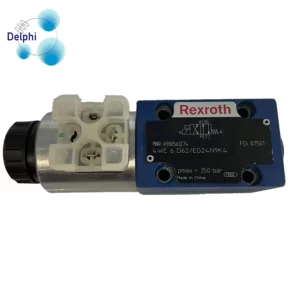UL (Underwriters Laboratories) certification for hydraulic valves ensures that the products meet specific safety standards and requirements. While the exact standards and requirements may vary depending on the type and application of the hydraulic valve.
Here are some common safety standards covered by UL certification:
UL 429: UL 429 covers requirements for controls and control centers for use with fluid power systems. This standard includes safety requirements for hydraulic valve controls and control centers, ensuring their safe operation and reliability.
UL 508: UL 508 is a standard for industrial control equipment, including hydraulic valve controls. It covers electrical safety requirements, such as protection against electrical shock, fire hazards, and short circuits.
UL 991: UL 991 covers safety requirements for hydraulic power-operated systems and their components. This standard ensures that hydraulic valves and related components meet safety criteria for their design, construction, and performance.
UL 1203: UL 1203 is a standard for explosion-proof and dust-ignition-proof electrical equipment used in hazardous locations. If the hydraulic valve is intended for use in potentially explosive atmospheres, it must meet the requirements of UL 1203 to ensure safe operation in such environments.
UL 1769: UL 1769 is a standard for safety-relief valves for pressure protection in hydraulic systems. This standard sets requirements for the design, construction, and performance of safety-relief valves used in hydraulic systems, ensuring their effectiveness in preventing overpressure situations.
These are just a few examples of the safety standards covered by UL certification for hydraulic valves. The specific standards and requirements may vary depending on the intended application, type of hydraulic valve, and other factors. hydraulic valve manufacturer It’s important for manufacturers and suppliers to consult with UL or refer to the UL certification standards applicable to their specific hydraulic valve products to ensure compliance with safety requirements.
What are the consequences for manufacturers and suppliers if their hydraulic valves do not meet UL certification requirements?
If a manufacturer or supplier’s hydraulic valves do not meet UL certification requirements, several consequences may arise, including:
Market Limitations: Without UL certification, manufacturers and suppliers may face limitations in accessing certain markets or customers. Many industries and sectors, particularly in North America, require UL-certified products as a prerequisite for purchase or installation. Non-compliant hydraulic valves may be excluded from consideration, limiting market opportunities and potential sales.
Legal and Regulatory Issues: Selling hydraulic valves without meeting UL certification requirements may violate legal and regulatory requirements. Authorities and regulatory bodies may take enforcement actions against non-compliant products, resulting in penalties, fines, or legal consequences.
Safety Concerns: UL certification ensures that hydraulic valves meet specific safety standards and requirements. Without certification, there is a potential risk of compromised safety and performance. Non-compliant valves may pose safety hazards, leading to accidents, equipment damage, or injuries. If incidents occur due to non-compliant valves, manufacturers and suppliers may face liability claims and damage to their reputation.
Loss of Customer Trust and Reputation: Non-compliance with certification requirements can damage the reputation and trust of manufacturers and suppliers. Customers rely on certifications such as UL to ensure the quality, safety, and reliability of products. If hydraulic valves do not meet certification standards, customers may lose confidence in the manufacturer’s ability to deliver reliable and compliant products, leading to a loss of business and a damaged reputation.
Increased Costs and Rework: Non-compliant hydraulic valves may require modifications or redesign to meet the certification requirements. This can result in additional costs, including redesign, retesting, and recertification. It may also lead to delays in product availability and increased time-to-market.
To avoid these consequences, it is crucial for manufacturers and suppliers to ensure that their hydraulic valves meet the applicable certification requirements, such as UL certification. This involves following proper design, manufacturing, and testing processes and working closely with certification bodies to achieve compliance and provide safe and reliable products to the market.

Comments